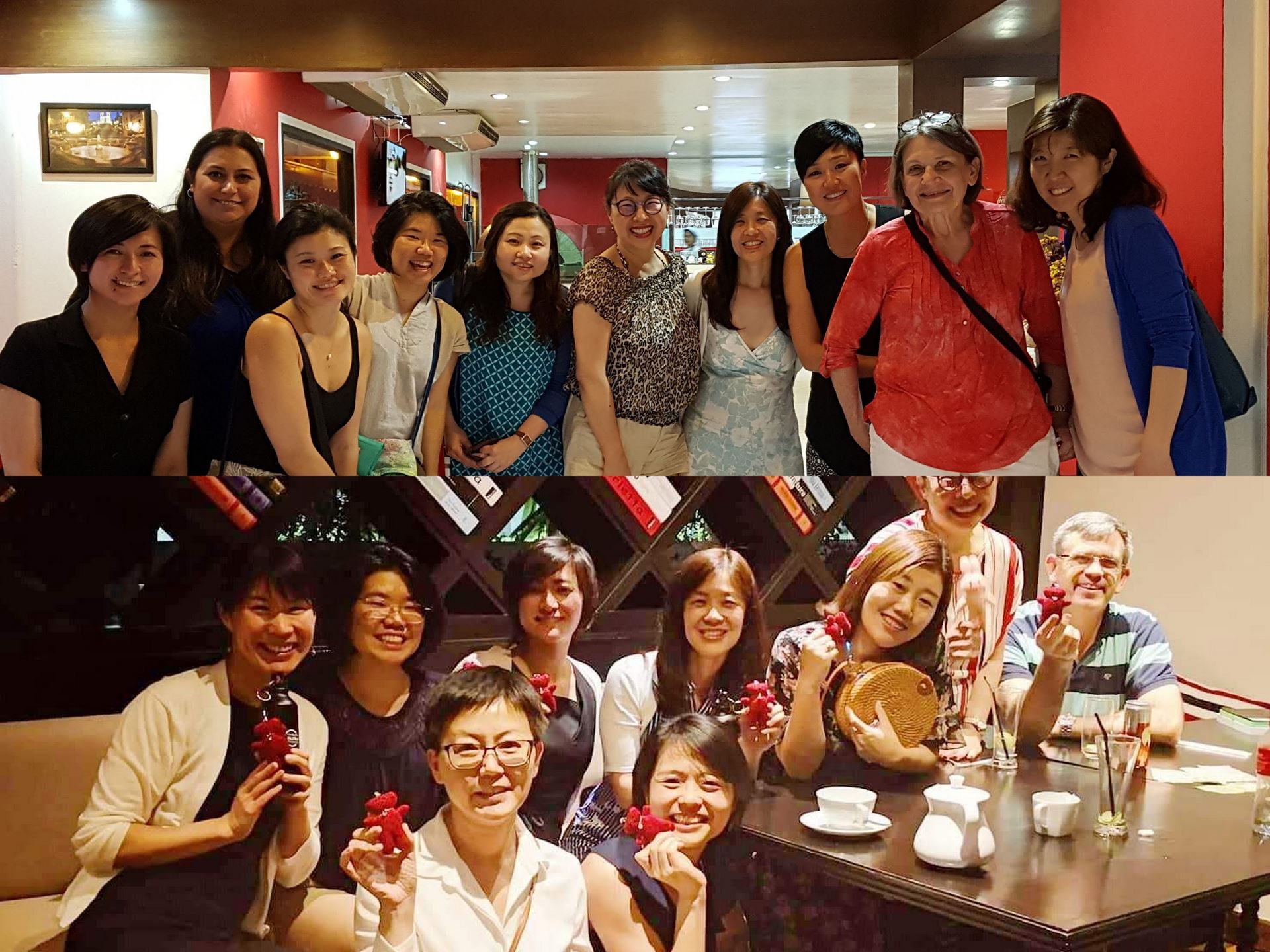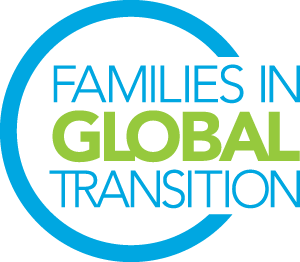As we all try to better address inequities in our mobile world, a group of FIGT Members who founded the public forum “TCKs of Asia” had a frank conversation on privilege and diversity.

For many Third Culture Kids (TCKs), having their experiences and commonalities named and described in Third Culture Kids: Growing Up Among Worlds was life-changing and affirming.
Now, as FIGT Founder Ruth Van Reken recently said, we are in the “next stage” of developing our understanding of TCK-hood, where we acknowledge the diversity of TCK experiences and how they are shaped by privilege (or lack thereof) in its myriad forms and manifestations.
A group of FIGT Members who founded the public forum “TCKs of Asia” had a frank conversation on privilege and diversity as TCKs who (in this particular discussion) were ethnically East Asian.
The TCKs of Asia forum grew out of a gathering of adult TCKs and expats who connected at FIGT2019 in Bangkok and who shared “a passion for…draw[ing] out the hidden voices among TCKs” (from their website). Isabelle Min, one of the founders, says: “We wanted to explore how the culture of Asia impacts the TCK experience. That was the conversation that was missing.”
Wanting to be inclusive, the founders decided to call the forum “TCKs of Asia,” instead of “from” or “in” Asia. “’Of’ means, you could have spent a short time in Asia and you could be of a totally different nationality and race and still be included,” says Isabelle.
We asked four of the founders to talk about what “privilege” meant to them, how it relates to diversity, and how to keep the conversation going.
[The following are highlights from a video call held in July 2020. It has been edited for clarity with the consent of and inputs from the participants.]
What has “privilege” (or lack thereof) meant for you as a TCK? And how is talking about privilege related to diversity?
Danau: I personally think about socioeconomic privilege because that’s what I have. Globally speaking, if we can afford to fly, then we are part of the 1% and there’s no denying that.
Jane: If your parents had the capability to work or study abroad, if their struggle and sacrifice provided a stronger financial starting point for you, that’s privilege.
Aiko: The FIGT [community] in general is privileged, we need to acknowledge that for sure. It’s not about race or where we were.
Jane: Not to deny that as TCKs we have our own challenges. We know that. Just because we acknowledge our privilege, it doesn’t mean that we don’t have our challenges.
Danau: We need to recognize our own privilege [before we can] talk about diversity. Acknowledging your privilege doesn’t make you a bad person.
How do these play out in the context of TCKs of Asia?
Danau: For example, all of us here [in this call] are ethnically East Asian. East Asia is economically more developed and that’s privilege right there. Southeast Asians, Africans, and others from the Global South may have an entirely different story.
The fact that we all speak English fluently means we’re already part of the privileged group among TCKs of Asia. As Aiko often says, there are many TCKs who aren’t fluent in English.
...privilege can be in something as subtle as a sense of entitlement
[Note added to elaborate: Privilege can come in many different forms. There are variations in privilege even among TCKs of Asia. For example, some have more “privileged” passports than others. Another form of privilege is fluency in English, though how much currency this carries after repatriation may differ from one context to another.]
Jane: Asians educated abroad back in Asia are an immediate elite!
Danau: Especially in developing countries!
Aiko: Well, to some extent. In Japan, becoming an elite is not immediate. It's only when you can speak English AND Japanese, as well as meet the Japanese standard [of being “Japanese” enough], then you’re an elite.
Just because we acknowledge our privilege, it doesn’t mean that we don’t have our challenges.
Isabelle: I’ve been on both sides in many ways. I went to an American school in Brazil in the 70s and as an Asian from Korea, which was a poor country at the time, I felt very, very underprivileged and ashamed for not speaking English and for my race, for the disdain with which teachers would look at me.
Ruth [Van Reken] pointed out to me recently that privilege can be in something as subtle as a sense of entitlement. Some people believe that if there is an injustice, they can talk to somebody and rectify it. I didn’t and don’t have that sense of entitlement in white spaces that I would be heard, that my voice matters—which is the epitome of “underprivileged” for me.
Then I repatriated to a country where I’m very privileged in terms of class (as a diplomat kid), language (speaking English), manners (I knew how to eat properly in a Western restaurant)…. I would say something and people would listen the moment I spoke.
I felt so confused: if I was inferior at an American school for not being a native speaker of English but am now treated as “special” in Korea for speaking English at all, then does that mean Korea is inferior to the West? This did not sit right with me.
Aiko: Within the TCKs of Asia group, I’m aware of the privilege I have by being Japanese. When I talk about my TCK experience, I try to be aware of what I say and how I say it because there are so many differences within the Asian context.
Growing up as a Japanese expat child, I know I’ve been very privileged, even compared to Japanese TCKs growing up now, because Japan was in a bubble economy back then. And my experience of being a Japanese in the US [in the 80s] is different from what Isabelle experienced [as a Korean in an international school in the 70s]. I find that really interesting.
[We should all] stick to talking about and acknowledging [our] own privilege
Isabelle: Every country is different in terms of economic development and how they perceive and receive TCKs, what sort of challenges TCKs face going back home… Some Asian countries are more accepting; others are more resistant so TCKs have to almost hide their TCKness to fit in.
[Through the TCKs of Asia forum,] we found so much diversity! We are acknowledging the privilege and the non-privilege. We are recognizing it the more we peel back the layers. We are realizing Asia is not one Asia, and to be mindful of that.
How can we better understand where privilege comes from?
Jane: Modern history matters. It’s because of our countries’ histories that some of our parents left at all, that’s part of the narrative.
Isabelle: When the conversation is geared towards TCKs of Asia as opposed to—say, Latin America or Europe—there’s a lot more tiptoeing around because we have a lot of countries within Asia that fought with each other and colonized each other. There’s a lot of pain there.
Danau: It feels as though the reason we’re having difficulty having these conversations is that most people have gaping holes in their knowledge of history.
...we have to understand the history to understand the context [of privilege]
Jane: Colonialism [as it relates to] why we are TCKs is another aspect that can be uncomfortable to talk about, but if we’re going to talk about TCKs of Asia, about diversity, we can’t ignore the elephant in the room. It’s a sensitive topic, but colonialism is part of the context [why some of the diversity among] TCKs exist.
Danau: Colonialism is seen as bad, so there’s a strong desire to insert a historical break between that and the modern expat life but we need to acknowledge that the current global economy is a legacy of colonialism.
It’s why there are so many immigrants from the Global South or the former colonies in countries like the US, while a lot of expats are from white settler countries and Western Europe.
And why are there more East Asian expats compared to Southeast Asian expats? Again we’ll need to look at history and its impact on the current global economic and political structures.
Where do Asians fit in the conversation about Black Lives Matter (BLM)?
Danau: In this group, we all recognize we’re privileged—we don’t have to worry about being shot when walking down the street. And as Asians, we experience racism but we participate in [perpetuating racism too]. Just because people are racist towards us, it doesn’t mean we’re automatically not racist or that we don’t have racist biases ourselves. Everyone contributes to structural racism.
Aiko: The Black Lives Matter (BLM) movement in Japan has been so confusing for me. People say “we support Black lives!” but I feel like they say it because they think it’s cool. I've seen some public figures saying “I love Black hip hop” “I love Black fashion” and therefore “I support Black lives!”
Jane: It’s complex because BLM is a slavery-induced issue in the US, specifically, though it has resonated worldwide. But we have to understand the [specific] history to understand the context [of privilege in that particular setting].
So is it time to shut up and listen?
Aiko: I think the safest way to have this conversation is to stick to talking about and acknowledging your own privilege. In the TCKs of Asia group, talking about the historical and economic contexts within Asia has helped me understand my own privilege that comes with being Japanese, because of our history of colonialism. It's hard to acknowledge your privilege if you don't start talking about it.

About the TCKs of Asia
 TCKs of Asia is a group of adult Third Culture Kids and expats who met at FIGT2019 in April 2019 and discovered a shared passion for drawing out the hidden voices among TCKs. What began as casual online FIGT reunions turned into a series of online public forums, which was launched in August 2019 over six months with the support of Dr Ruth Van Reken.
TCKs of Asia is a group of adult Third Culture Kids and expats who met at FIGT2019 in April 2019 and discovered a shared passion for drawing out the hidden voices among TCKs. What began as casual online FIGT reunions turned into a series of online public forums, which was launched in August 2019 over six months with the support of Dr Ruth Van Reken.
But given their TCK jitters about making long-term plans, they only committed to running three forums initially—the last of which was titled “Language & Power” and delved into the issues surrounding the privilege that comes with speaking English fluently. The group is hoping to launch another series later this year. If they do, it will be announced on their make-shift website and Facebook group.
Participant bios
Isabelle Min is CEO and Founder of Transition Catalyst Korea (TCK) Institute. She combines her TCK upbringing with 30 years' experience as a public broadcaster, adjunct professor, and intercultural trainer to coach, facilitate, and mediate individuals and teams. Isabelle has been leading FIGT Korea Affiliate since 2010.
Aiko Minematsu is co-founder of FIGT Japan Affiliate and lecturer at the Center for Language Education and Research at Sophia University in Tokyo, Japan. She holds an MA in TESOL from Teachers College Columbia University and a secondary school teaching license for foreign language education in Japan.
Danau Tanu, PhD, is author of Growing Up in Transit: The Politics of Belonging at an International School. She is an Honorary Research Fellow at the University of Western Australia and was recently awarded a Japan Foundation Fellowship for postdoctoral research at Waseda University for 2021. Danau is Co-Chair of the FIGT Research Network.
Jane W. Wang is taking TCKs and CCKs on multicultural hero’s journeys, developing multicultural leaders with the expanded self-awareness, empathy, and resilience to realize their full power and purpose. Now living in San Francisco, she’s a TCK hailing from Taiwan and the US, with Japan being her third home.
[Interviewed & edited by Ema Naito]

